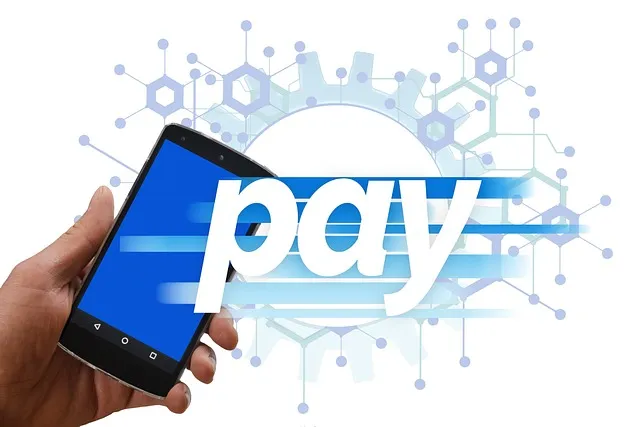Anonymous web browsing facilitated by tools like Tor offers hackers robust privacy and security through IP address masking and encrypted data exchanges, fostering collaboration and knowledge sharing without fear of identification. In the dark web, advanced encryption protocols such as SSL/TLS, Tor, and AES ensure confidential data exchange, securing transactions and preserving anonymity. While these tools benefit business professionals accessing the dark web for legitimate purposes, they also pose legal and ethical challenges; engaging in unauthorized access or malicious activities is unethical and illegal. Professionals must prioritize responsible digital usage, adhering to legal and ethical boundaries.
Explore the shadowy corners of the internet with our comprehensive guide on anonymous web browsing, a cornerstone of hacker communities. We delve into the mechanisms behind secure, private interactions, focusing on the pivotal role of encryption in protecting confidential data exchanges on the dark web. This article navigates legal implications and ethical considerations, equipping business professionals with insights into the potential risks and tools used to maintain anonymity while highlighting the importance of encryption for securing sensitive information.
- Understanding Anonymous Browsing: A Gateway to Privacy for Hackers
- The Role of Encryption in Securing Online Interactions within Hacker Communities
- Tools and Techniques for Confidential Data Exchange in the Dark Web
- Legal Implications and Ethical Considerations for Business Professionals Accessing Anonymously
Understanding Anonymous Browsing: A Gateway to Privacy for Hackers

Understanding Anonymous Browsing: A Gateway to Privacy for Hackers
Anonymous web browsing is a powerful tool that enables hackers to navigate the internet with enhanced privacy and security. By employing techniques such as Tor (The Onion Router) or other encrypted proxies, users can mask their IP addresses and encrypt confidential data exchanges. This creates a virtual tunnel that routes internet traffic through multiple encrypted layers, making it extremely difficult for third parties to track online activities. For hackers, this anonymity is a double-edged sword—it allows them to access restricted information, participate in covert communities, and exchange sensitive details without fear of exposure.
This practice is particularly appealing to hacker communities as it fosters an environment where members can collaborate, share vulnerabilities, and develop exploits without worrying about legal repercussions or personal identification. The encrypted nature of these networks ensures that business professionals’ confidential data remains secure, even when browsing the dark web—a hidden part of the internet often associated with illicit activities. By leveraging anonymous browsing, hackers can navigate this intricate digital landscape while maintaining a level of privacy and anonymity that is crucial to their operations.
The Role of Encryption in Securing Online Interactions within Hacker Communities

In the clandestine world of hacker communities, where confidential data and sensitive discussions are exchanged, encryption plays a pivotal role in securing online interactions. By employing robust encryption protocols like SSL/TLS, members can ensure that their communications remain private and unreadable to unauthorized parties. This is particularly crucial for business professionals engaging in clandestine operations or sharing highly sensitive information, as it safeguards against potential surveillance and data breaches.
The use of advanced encryption algorithms not only encrypts data during transit but also provides a robust layer of protection at rest. This dual approach ensures that even if hackers’ servers are compromised, the decrypted data remains secure. Thus, encryption serves as a cornerstone in fostering a safe and trustworthy environment for members of hacker communities to collaborate, share insights, and plan operations without fear of exposure or legal repercussions.
Tools and Techniques for Confidential Data Exchange in the Dark Web

In the dark web, where anonymity is paramount, hackers’ communities have developed sophisticated tools and techniques to facilitate confidential data exchange. These methods often involve robust encryption protocols designed to protect sensitive information from prying eyes. Confidential Data Encryption for Business Professionals plays a pivotal role in this process, ensuring that transactions remain secure and untraceable. Advanced algorithms like AES (Advanced Encryption Standard) are widely adopted, allowing users to encrypt data at rest and in transit.
One prevalent technique is the use of Tor (The Onion Router), which routes internet traffic through multiple encrypted layers, making it incredibly difficult to trace. Additionally, hackers leverage encrypted messaging platforms and secure file-sharing networks to communicate and transfer data secretly. These tools are not only crucial for data exchange but also for coordinating attacks, sharing exploits, and discussing strategies within the hacker community.
Legal Implications and Ethical Considerations for Business Professionals Accessing Anonymously

While anonymous web browsing offers a level of privacy and security, particularly within hackers’ communities, it also raises significant legal implications and ethical considerations for business professionals who might access such networks. The use of tools like virtual private networks (VPNs) and Tor browsers to mask IP addresses and encrypt confidential data is a double-edged sword. While encryption is crucial for protecting sensitive business information during transmission, it can also be employed to conceal illicit activities.
Business leaders must navigate the ethical terrain carefully, especially when accessing anonymized spaces. They should be aware that legal jurisdictions have established laws to combat cybercrime and protect user data. Engaging in anonymous browsing with the intent to violate data security protocols, access proprietary information without authorization, or engage in malicious activities is unethical and often illegal. Thus, professionals must prioritize responsible usage, ensuring their digital footprints remain within the bounds of legality and ethical conduct.
In conclusion, anonymous web browsing plays a pivotal role in protecting the privacy of hackers’ communities while facilitating confidential data exchange. Through advanced encryption techniques and specialized tools, members can navigate the dark web securely. However, as these technologies become more accessible, business professionals must be aware of the legal implications and ethical considerations associated with accessing anonymized platforms. Implementing robust confidentiality measures, such as encryption for sensitive data, is essential to mitigate risks and ensure secure interactions in today’s digital landscape.
